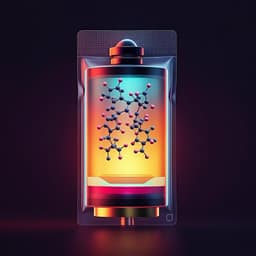
Engineering and Technology
Soft, tough, and fast polyacrylate dielectric elastomer for non-magnetic motor
L. Yin, Y. Zhao, et al.
This groundbreaking research by Li-Juan Yin and colleagues unveils a new polyacrylate dielectric elastomer that drastically improves actuating performance. With a remarkable elongation of 2400% and a 15 times increase in motor speed compared to traditional materials, this study sets the stage for the next generation of soft actuators.
Playback language: English
Related Publications
Explore these studies to deepen your understanding of the subject.







